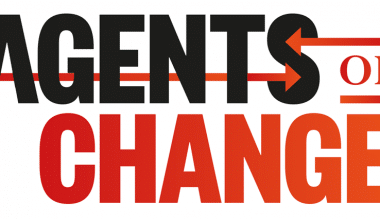After 14 years in the online market, Etsy is one of the select few that has made it big, becoming the go-to platform for artists worldwide. Etsy is more than simply an e-commerce platform; it is also a community that assists artists in earning money for their work. At the same time, Etsy is turning a profit. How? How does Etsy make money? Why is Etsy’s humanitarian yet profitable business model? What marketing technique helped Etsy become so well-known?
What is Etsy?
Etsy is an e-commerce marketplace that sells unique handmade or vintage objects and crafts from individuals. It is home to products such as sculptures and handwritten recipes. While Amazon and Alibaba have filled in as the marketplace for mass-manufactured items and resellers, Etsy established its niche by catering to the handmade and antique markets.
Etsy was founded in 2005 from an apartment by Rob Kalin, Chris Maguire, and Haim Schoppik to act as a marketplace for crafts and handmade products. As of this writing, 75% of the 60 million products posted on Etsy are handcrafted and thus one-of-a-kind.
Etsy Business Model
Etsy’s business model is similar to that of other e-commerce competitors, such as Amazon, in that it provides an online platform for purchasing and selling items – specifically, an online marketplace for unique and creative goods.
Etsy distinguishes itself from the competition by taking a vertical approach to its e-commerce business strategy – Etsy primarily sells craft items in specialized categories. Etsy describes itself as “a realm of rare, extraordinary stuff, from unique handcrafted pieces to vintage treasures.”
Sites like Amazon, on the other hand, take a more horizontal approach, selling practically everything.
How Does Etsy Work?
Etsy caters to two distinct client segments – shoppers and sellers – because it is a marketplace that invites vendors of specialty items to connect with interested purchasers. It is more of a case of shared success – more merchants bring in more buyers, which helps Etsy earn more money.
Key Partners on Etsy
#1. Sellers
Artists and small businesses who produce handcrafted items and proprietors of antiques and vintages are examples of sellers. Etsy caters to folks who want to sell their goods on the internet.
#2. Buyers
Buyers are those who seek handmade, one-of-a-kind, and one-of-a-kind products not just in physical stores but also online. They are also interested in antique and vintage items.
Etsy’s Business Model
Etsy functions similarly to any other e-commerce site. It provides an excellent and well-organized platform for vendors to list their items and for consumers to find them easily.
Etsy operates straightforwardly: sellers register to post their things for sale.
Buyers search for things and place orders on those they like – Etsy allows transactions to be completed from within the platform.
Buyers can rate and evaluate the things they have purchased. As a result, the platform can leverage social validation.
Let’s look at how Etsy makes money now that we know how it works and its key partners.
How Does Etsy Make Money?
Listing fees, transaction fees, promotional ads, subscription fees, and payment processing costs are how Etsy makes money. Etsy’s business concept is based on a marketplace.
Since its inception, Etsy’s business strategy has grown from simple listing and commission fees to a platform approach that allows it to monetize at many stages along the buyer journey.
In the section below, we’ll look closely at each income stream.
#1. Listing Fees
Sellers are charged a $0.20 listing fee for each item on Etsy’s site. There are no fees for Pattern or Private postings (more on later).
Charges are also levied when a listing is renewed. Listing fees are not contingent on future sales success.
Offers are typically uploaded every four months and are automatically renewed when the term expires. Nonetheless, sellers have the option to disable automatic renewals.
#2. Transactions Fees
Etsy charges a 5% commission fee for every successful sale made through their marketplace. Other fees include the amount stated by the seller for shipping and gift wrapping.
The corporation maintained its 3.5 percent commission rate for over 13 years until changing it in 2018. Many sellers were irritated when Etsy announced commission increases, but the site remains one of the cheapest to sell on.
eBay, for example, keeps 10% of every sale made on its platform. Amazon charges commission fees ranging from 8% to 15%.
#3. Advertising and Promotion
Etsy provides various promotional options to assist its merchants in increasing sales. The Etsy Ads and Offsite Ads are examples of these.
Etsy Ads are displayed throughout the Etsy website, such as on search, category, and market pages. Sellers are only charged when a user clicks on an advertisement. Different CPC (Cost Per Click) prices apply depending on the advertising location, category, and country.
Offsite Ads are displayed outside the company’s platform, as the name implies. Etsy typically purchases advertising space on other platforms, such as social media networks and search engines. Sellers are only charged for offsite advertising when a user clicks on the offer and completes a purchase within 30 days of the initial click.
When merchants make a transaction using offsite ads, they pay 12 or 15% commission. The fee levied is determined by the merchant’s sales history.
#4. Subscriptions
Premium merchants on the marketplace can sign up for Etsy Plus, a bundle that includes various sales-boosting features. Etsy charges a $10 monthly subscription fee.
The Etsy Plus’s premium features include the following:
- Restock requests (enabling customers to be notified when the merchant’s products are restocked)
- Advanced store personalization
- Discounts and incentives are available, such as bespoke shipping boxes or business cards.
- $5 credit for Etsy Ads
- 15 credit listings
Etsy subscribers can also register for free, store domains, and save 50% on domain registrations such as.com or.net. The deal is available for the first year of registration and is made possible by Etsy’s partner Hover.
#5. Pattern
Pattern is a website builder that enables merchants to create their own stores on a domain other than Etsy’s.
Etsy charges a $15 monthly subscription fee. The listing and transaction fees on Etsy’s core platform do not apply to sales made on Pattern websites.
The tool’s advantages include building unlimited listings, robust website statistics, blog and social media sharing, and email marketing (in cooperation with MailChimp).
The pattern is completely free for the first 30 days. This attracts more consumers to the service.
#6. Payment Processing
While using Etsy’s services, retailers can accept payments in their local currencies thanks to Etsy Payments.
Etsy Payments merchants can accept payment by credit card, debit card, gift card, and Etsy Credit. Third-party platforms such as PayPal, some bank transfer services, Apple Pay, and Google Pay can also be used.
In exchange for enabling the payment of any order, Etsy charges both a percentage and a flat fee. Percentage costs range from 3 to 6.5 percent, whereas fixed fees are usually around $0.30. The exact amount is determined by the country where the seller’s bank account is located.
The costs listed above apply to online sales. If the merchant has a physical store, he or she can use a Square card reader to handle in-person sales.
Square’s payment processing fees apply to physical sales. It is reasonable to believe that Etsy receives a portion of that proportion in exchange for facilitating the transaction and advertising Square’s card reader.
Advertising, Pattern, payment processing, and Etsy Plus are all within Etsy’s Service category.
Service revenue accounts for almost a quarter of Etsy’s total revenue. This demonstrates the power of established marketplaces, which may profit from commissions and severe rivalry among sellers.
The more buyers a marketplace attracts, the more likely sellers will be willing to pay for additional services.
How Much Money Does Etsy Make On Each Sale?
Etsy generates money by collecting small fees. On Etsy’s marketplace, millions of people list their wares for sale. The company initially charges $0.20 for each item advertised for sale, and each listing is active for four months. According to its website, Etsy charges a 5% transaction fee, a 3% commission, and a $0.25 payment processing fee for each item sold.
Etsy Charges What Kind of Fees?
Etsy generates money by charging fees to post and sell things on its website. The company generates money in two ways:
- Fees for listing things, transaction costs, commissions, and processing fees contribute to marketplace earnings.
- Seller services also contribute significantly to Etsy’s earnings. Fees related to the company’s advertising platform, direct checkout, payment processing, and cheap shipping labels generate money.
What Makes Etsy Such a Popular Online Marketplace?
Appscript compares Etsy’s business strategy to that of Amazon and eBay. Sellers like Etsy for a variety of reasons, according to seller data and online reviews:
- Etsy charges cheaper costs and makes it simple for merchants to receive payments.
- The company provides USPS shipping reductions. For a modest cost, sellers can print postal labels from the Etsy website.
- Etsy uses Google Product Listing Ads for free.
- The company provides impressive seller analytics, such as store views, online traffic leads, and viewer country locations.
- Specific items from featured sellers on Etsy are connected on Twitter, Pinterest, and Facebook.
- Sellers can provide potential customers with discounts and coupons.
- Sellers can send follow-up emails to customers to encourage repeat purchases.
What Distinguishes Etsy from Amazon and eBay?
Etsy, Amazon, and eBay are all popular and reliable online marketplaces. The primary distinction between the companies is the selling platform they employ. Amazon and eBay use a horizontal platform model. On their websites, they sell almost anything. Etsy, on the other hand, operates on a vertical platform approach. The company solely sells artisan and vintage things in a variety of categories. Etsy is a niche market offering excellent value for both vendors and shoppers.
Etsy’s Marketing Strategy
Etsy is aggressively investing in its marketing approach. Its market spending climbed by 100% year on year in 2020. Etsy’s marketing strategy is divided into three categories: advertising, influencer marketing, and digital campaigns. Advertising accounts for around 85% of Etsy’s marketing budget.
#1. Advertising
Etsy invests in upper-funnel methods such as television, digital video, and sponsored social with inspirational advertising that create emotional connections and reaffirm the company’s primary brand promise. Etsy is also focusing on using its new CRM tools to segment and target shoppers with messaging on and off the site. So, Etsy launched Offsite Ads, a powerful and risk-free advertising tool that allows sellers free access to some of the internet’s most famous sites.
#2. Influencer Marketing
Etsy prioritized discovering and finding influencers to advocate the platform in the relevant niche to reach its brand recognition and sales goals. Qoruz, an influencer marketing platform, implemented a combination of influencer profile analysis, outreach, and performance analytics.
#3. Digital Marketing Campaigns
Etsy’s digital marketing approach relies on launching campaigns that elicit a strong emotional response. Etsy’s “Give more than a gift” campaign encourages consumers to give something unique as a present. With such promotions, Etsy is cleverly luring buyers away from other e-commerce platforms, as these one-of-a-kind gifts are only available on Etsy.
Etsy has pushed its marketing strategy to a new level with its campaign “Why Buy Boring.” Consider a website asking you to buy from its platform because you are not ordinary, uninteresting, or uninteresting. So why buy from dull websites (you know what I mean!).
Etsy promotes unique products from its sellers through its social media approach, particularly Instagram. This method instilled two positive thoughts in the minds of Etsy users.
Such blogs show that Etsy cares about its sellers and small businesses and is a decent corporate citizen. Second, it is undeniable that admiration for handicrafts is dwindling in this digital age, and Etsy appears to be doing a fantastic job of promoting such art.
What Can Business Owners Learn From Etsy?
There are a few things that businesses can take away from Etsy’s business model’s success.
- Find your niche- Do not attempt to become Amazon on Day 1. Even Amazon began by selling solely books. But how do you go about finding that niche? Consider a problem you are experiencing and consider whether other people are experiencing the same difficulty. Etsy founder Rob Kalin was hoping to sell handmade furniture in New York. Most of his friends were in a similar situation. And it was Kalin’s lightbulb moment.
- Earning Trust- In 2020, the world held firms accountable for being excellent enterprises and good people amidst economic uncertainty and a volatile political environment. Etsy considers itself a good citizen since it has taken the lead on many significant social and societal concerns. Avoid being overly aggressive in your sales tactics. Once you have earned the trust of your customers, sales will follow. For instance, consider Etsy’s revenue increasing by 100% even during the pandemic.
Etsy’s business strategy impacts all aspects of business: economic, social, and environmental.
Related Articles
- ETSY AFFILIATE: Reviews and Guide
- 51+ ETSY SHOP IDEAS To Consider In 2023
- Sell Your Business: How To Sell Your Business & Ideas Online
- COURSE AFFILIATE MARKETING: Definition, Examples, and the Best
- BEST ETSY BLACK FRIDAY SALES IN 2022






